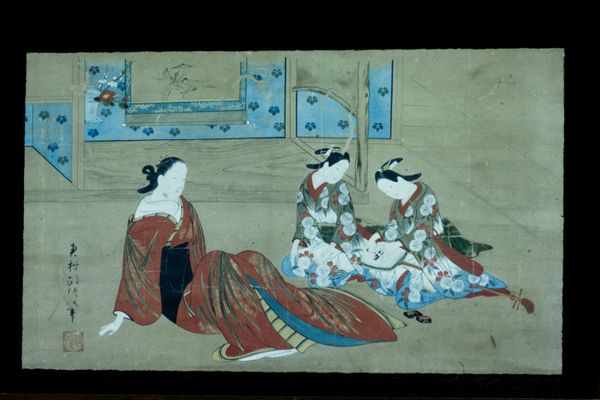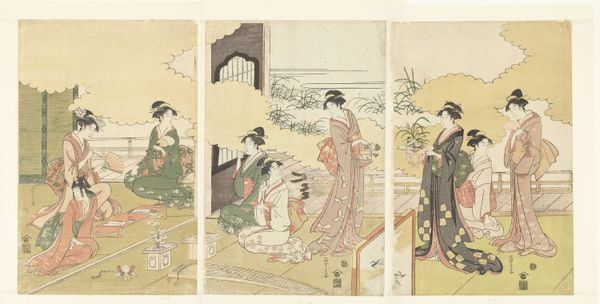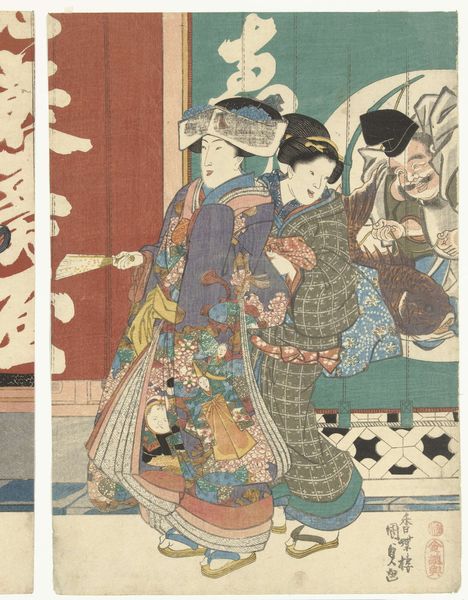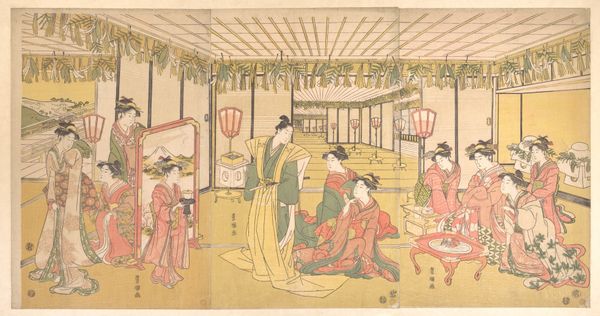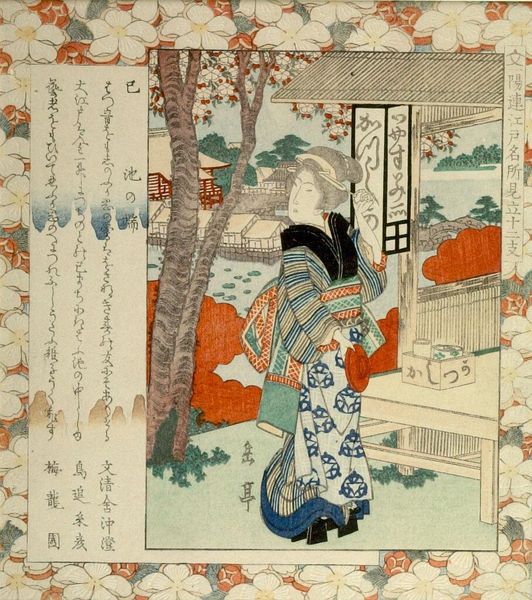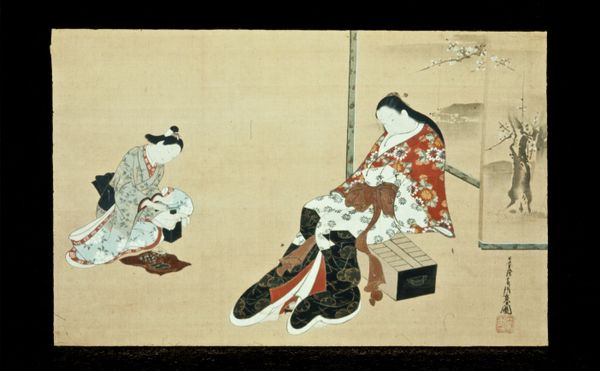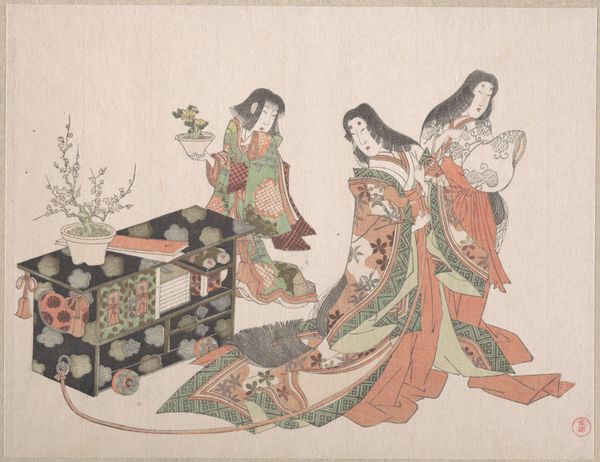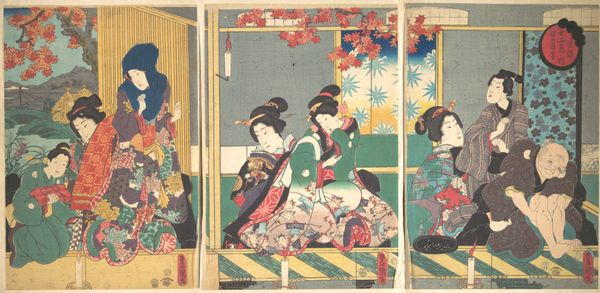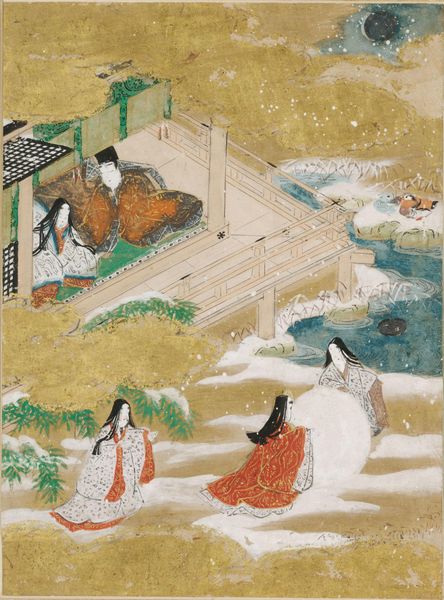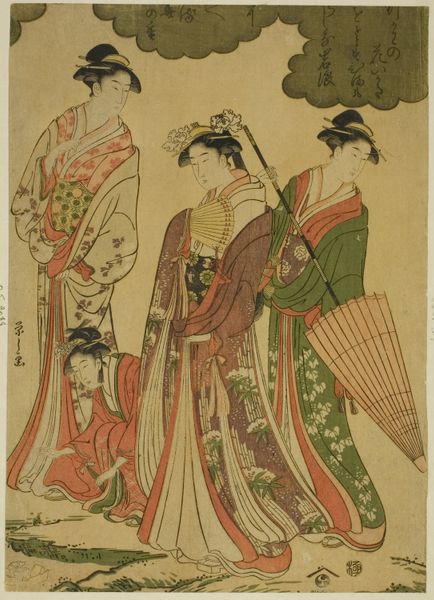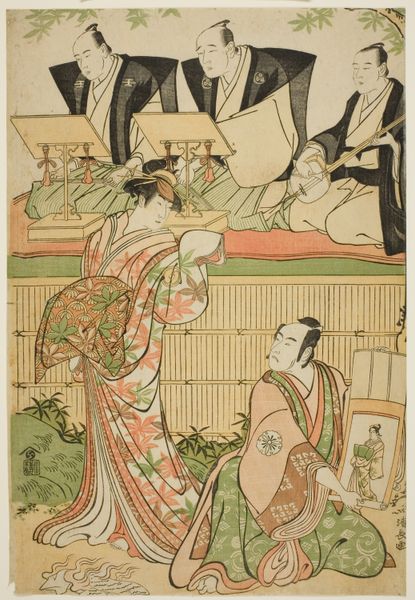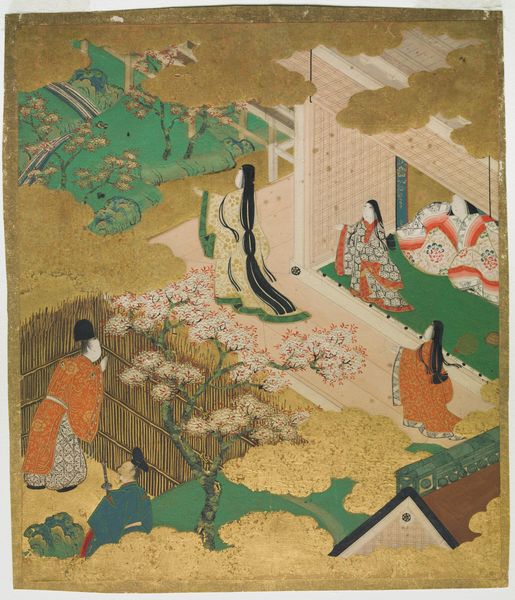
painting, watercolor
#
narrative-art
#
painting
#
asian-art
#
ukiyo-e
#
figuration
#
watercolor
Dimensions: Image: 9 1/4 x 7 1/4 in. (23.5 x 18.4 cm) Overall with mounting: 12 1/2 x 9 in. (31.8 x 22.9 cm)
Copyright: Public Domain
Curator: Let’s turn our attention to “Scenes from Tales of Ise,” an intriguing watercolor by the Tosa School, likely created between 1771 and 1799. What's your initial response? Editor: I'm struck by the vertical layering and compartmentalization of the figures. The space is very shallow; yet there is an illusion of depth and a curious dreamlike quality. Curator: Absolutely. Consider that this work, currently residing at the Metropolitan Museum of Art, brings to life episodes from the Ise Monogatari. This is a collection of poems and prose, a pivotal text exploring Heian-era courtly love and aristocratic culture. Editor: Yes, and look at the delicate precision with which each plane and object is articulated! From the elaborate drapery to the lattice work on the house. There is clearly a deliberate orchestration of shape and form to unify the image. Curator: Precisely. These tales explore nuanced gender dynamics and the complex societal constraints of the time. Note the women peering from the raised house as witnesses to what’s happening with the man in front of them. Editor: The women serve both a structural and a narrative purpose. Their inclusion creates an intriguing interplay between interiority and exteriority. There's a powerful contrast created by juxtaposing interior and exterior elements with careful attention paid to geometric progression. Curator: True, it creates that kind of narrative tension, that liminal space in-between—that so much feminist theory discusses when describing the constraints within those patriarchal structures, yet with an implicit nod to women's agency through observation. Editor: It all leads back to these gorgeous watercolor choices—earthy tones paired with vibrant detailing. The effect produces visual interest without ever disturbing overall harmony of composition. Curator: And when situated in historical context, these are commentary on not just interpersonal relationships but also offer broader observations about class, status, and power within 18th-century Japan. What have we learned by viewing it today? Editor: To me, that such deliberate visual arrangements still yield complex and poignant viewing experiences over two centuries later—remarkable! Curator: I concur! "Scenes from Tales of Ise" allows for that vital dialogue across time, revealing just how history's echoes shape and resonate within the present moment.
Comments
No comments
Be the first to comment and join the conversation on the ultimate creative platform.
